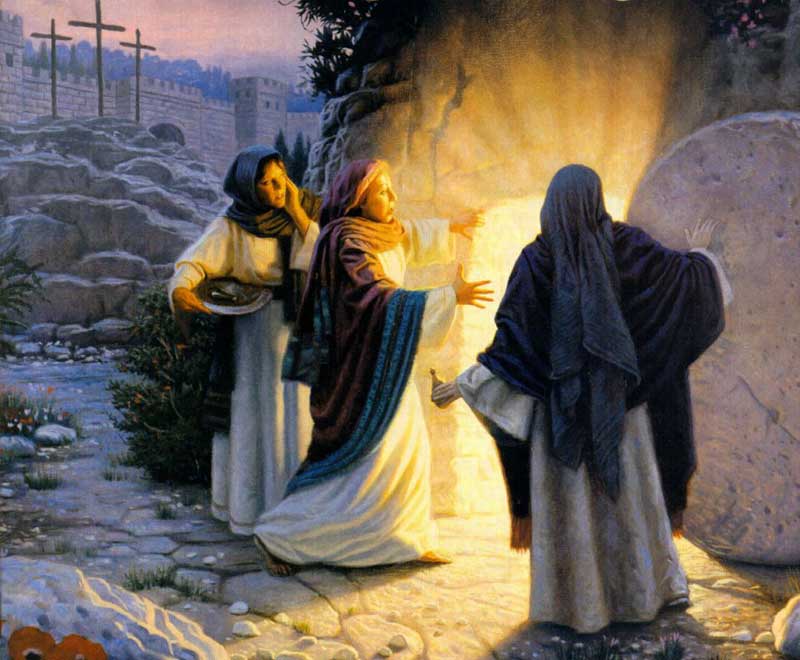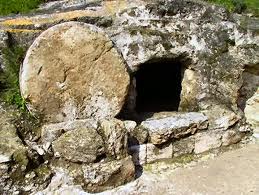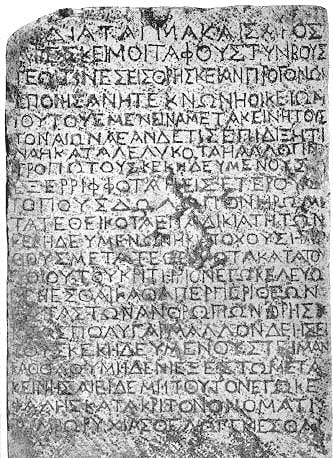Introduction
 If you want to disprove Christianity, disprove the resurrection. If you can do this, then Christianity crumbles. The apostle Paul says similarly in 1 Corinthians 15:14:
If you want to disprove Christianity, disprove the resurrection. If you can do this, then Christianity crumbles. The apostle Paul says similarly in 1 Corinthians 15:14:
And if Christ be not risen, then our preaching is futile and your faith is also in vain.
He makes the point further in verses 15–18 and concludes in verse 19:
If in this life only we have hope in Christ, we are of all men most to be pitied.
Albert Henry Ross was skeptical regarding the resurrection of Jesus and set out to analyse the sources and to write a short paper entitled Jesus – the Last Phase, to demonstrate that it is only a myth. In compiling his notes, he came to be convinced of the truth of the resurrection and set out his reasoning in the book Who moved the stone? which he wrote under the pseudonym Frank Morison. It was first published in 1930 and it has led many people to put their faith in Christ.[1]
Josh McDowell set out to disprove Christianity by disproving the Christ’s resurrection. He states:
After more than 700 hours of studying this subject, I have come to the conclusion that the resurrection of Jesus Christ is either one of the most wicked, vicious, heartless hoaxes ever foisted on the minds of human beings—or it is the most remarkable fact of history.[2]
He concluded the latter and became a Christian. Since then he has written life-changing books on the subject and is one of the most quoted apologetics’ authors.
Lee Strobel was shocked when his wife announced to him that she had become a Christian. For once the overtly atheist Strobel is left undone. So, he sets out on a mission to “save” his wife and children from what he perceives as brainwashing. He realised that Christianity is unlike other religions; it invites investigation. The apostle Paul urged the people in the Corinthian church to investigate the truth of Christ’s resurrection for themselves because many eye witnesses were still alive.[3] Historical issues can be investigated. Historical texts can be investigated. He then seeks to disprove Christianity and in particular, the resurrection of Jesus Christ. To use his words:
I plunged into this case with more vigour than with any story I have ever perused. I applied the training I had received from Yale Law School as well as my experience as legal affairs editor of the Chicago Tribune.
He concluded that Jesus was really the Son of God and He actually rose from the dead. He wrote it in a book called, The Case for Christ, which sold 8 million copies. To read my article on Strobel, go to: adefenceofthebible.com/2017/07/14/lee-strobel.
Now, let us consider some of the evidence for Christ’s resurrection.
Evidence for the Resurrection
The tomb was secured
Pilate ordered the tomb to be guarded at the insistence of the Jews:[4]
“Sir, we remember, while He was still alive, how that deceiver said, ‘After three days I will rise.’ Therefore command that the tomb be made secure until the third day, lest His disciples come by night and steal Him away, and say to the people, ‘He has risen from the dead.’ So the last deception will be worse than the first.”
Pilate’s response to this request is recorded as:
“You have a guard; go your way, make [it] as secure as you know how.”
His answer can be interpreted in either of two ways as Lita Cosner of Creation Ministries International explains.[5] Pilate consenting to their request in providing a Roman guard or telling the Jews to use their own guard which would have been the Temple guard (see Luke 22:4 and John 7:32, 45-49). The arguments for each are given in the footnote[6] In any event, the tomb was guarded and sealed to make it secure thereby placing the resurrection beyond doubt.
The large stone was removed
 Archaeological evidence suggests that this stone would have weighed two tons. The normal procedure was for the stone to be rolled along a v-shaped groove, and once the body was interred, it would be rolled into place and wedged there in order to prevent the grave from being robbed. It would have taken many men to perform this task.
Archaeological evidence suggests that this stone would have weighed two tons. The normal procedure was for the stone to be rolled along a v-shaped groove, and once the body was interred, it would be rolled into place and wedged there in order to prevent the grave from being robbed. It would have taken many men to perform this task.
| The image is of a first century tomb at Mount Carmel. |
The tomb was empty
This is the greatest evidence of the risen Savior. No body has ever been produced. It would have been very easy for the Jews to disprove the resurrection by simply producing His body. No one has been able to do this in 2,000 years.
The grave clothes were intact
The tomb was not totally empty, for when the disciples looked where Jesus had lain:
[They] saw the linen cloths lying there, and the face cloth, which had been on Jesus’ head, not lying with the linen cloths but folded up in a place by itself.[7]
In fact, the grave clothes were possibly set hard since they consisted of strips of linen[8] saturated with a mixture of about 34 kilograms (75 pounds) of myrrh and aloes.[9] Indeed, this embalming procedure would make it very difficult, if not impossible, for anyone to remove the body and reconstitute the bandages.
His resurrection was unexpected
According to the gospel narratives, none of Jesus’ followers expected Him to rise from the dead. Luke wrote that when Jesus appeared to them in a room with the doors closed:
…they were terrified and frightened, and supposed they had seen a spirit.[10]
Jesus comforted them by telling them not to be afraid because it really was Him, and He invited them to look at His hands[11] and feet where the nails had pierced. He assured them that He was not a spirit but real flesh and blood.[12] The disciple Thomas (Doubting Thomas) was not present and when told of the incident, he refused to believe that Jesus had risen from the dead.[13] until one week later when Jesus actually stood before him. At this point, Thomas no longer doubted and made his great confession, for now he knew that Jesus was alive and recognized His divinity with his statement:
My Lord and my God.[14]
The testimony of a hostile witness
As compelling evidence as the above may be, even more compelling is the testimony of a hostile witness: in this case Saul of Tarsus, who despised Jesus and persecuted His followers.[15] However, when the risen Christ appeared to him on the road to Damascus, he believed with a passion and became one of the greatest advocates and propagators of the Good News.
Those who saw the resurrected Christ were still alive
Paul states in chapter 15 of his first letter to the church at Corinth that Jesus appeared to 500 witnesses at the one time and if anybody doubted this, most of these witnesses were still alive and he or she could quickly obtain confirmation.Jesus’ post-resurrection appearances
In all, there were 11 recorded post-resurrection appearances of Jesus over a forty-day period and at various times of the day. We can count twelve if we include Paul’s conversion on the road to Damascus.
| Event | Date | Matthew | Mark | Luke | John | Acts | 1 Corinthians |
| At the empty tomb | Early Sunday morning | 28:1–10 | 16:1–8 | 24:1–12 | 20:1–9 | ||
| To Mary Magdalene at the tomb | Early Sunday morning | 16:9–11 | 20:11–18 | ||||
| To two travellers on the road to Emmaus | Sunday at midday | 24:13–32 | |||||
| To Peter in Jerusalem | During Sunday | 24:34 | 15:5 | ||||
| To ten disciples in upper room | Sunday evening | 24:36–43 | 20:19–25 | ||||
| To eleven disciples in upper room | One week later | 16:14 | 20:26–31 | 15:5 | |||
| To seven disciples fishing on Sea of Galilee | One day at daybreak | 21:1–23 | |||||
| To eleven disciples in Galilee | Some time later | 28:16–20 | 16:15–18 | ||||
| To more than 500 | Some time later | 15:6 | |||||
| To James | Some time later | 15:7 | |||||
| At the Ascension on the Mt of Olives | Forty days after the resurrection | 1:3–8 |
Jesus’ brothers did not believe in His Messiahship
During his earthly life, His brothers did not believe His Messiahship[16] and yet after His resurrection two became believers, each wrote a book (James and Jude) and spent the rest of their lives proclaiming the Good News.
Being prepared to die for what they believed
If more evidence is needed, it can be found in the form of His disciples who, by spreading the gospel, risked their lives. Extra-biblical writings tell that all of them (except John) lost their lives for the sake of Christ. This is even more compelling when their cowardly behaviour at the time of Christ’s arrest is taken into account. Of all people, it was the disciples and the women with them who would have known if Jesus had risen from the dead, and on the basis of His resurrection, they willingly gave their lives. Would you give your life for something that you knew was a lie?
If Jesus’ resurrection was a lie, the disciples kept it secret for decades.
 Charles Colson of Watergate infamy, who became a Christian, started Prison Fellowship and wrote the much challenging and widely read book; Born Again and nine other books, makes this point very clear:
Charles Colson of Watergate infamy, who became a Christian, started Prison Fellowship and wrote the much challenging and widely read book; Born Again and nine other books, makes this point very clear:
I know the resurrection is a fact, and Watergate proved it to me. How? Because 12 men testified they had seen Jesus raised from the dead, then they proclaimed that truth for 40 years, never once denying it. Everyone was beaten, tortured, stoned and put in prison. They would not have endured that if it weren’t true. Watergate embroiled 12 of the most powerful men in the world-and they couldn’t keep a lie for three weeks. You’re telling me 12 apostles could keep a lie for 40 years? Absolutely impossible.
The Nazareth Inscription
 Further supporting evidence comes in the form of a marble tablet known as the Nazareth Inscription. It was acquired by Wilhelm Fröhner (1834–1925) to form part of his collection of ancient inscriptions and manuscripts. It was labelled: This Marble was sent from Nazareth in 1878. Since 1925 it has been in the Bibliothèque nationale, Paris, displayed in the Cabinet des Médailles.[17]
Further supporting evidence comes in the form of a marble tablet known as the Nazareth Inscription. It was acquired by Wilhelm Fröhner (1834–1925) to form part of his collection of ancient inscriptions and manuscripts. It was labelled: This Marble was sent from Nazareth in 1878. Since 1925 it has been in the Bibliothèque nationale, Paris, displayed in the Cabinet des Médailles.[17]
The Nazareth Inscription Translation from the koine Greek text by Clyde E. Billington:[18]
- EDICT OF CAESAR
- It is my decision [concerning] graves and tombs–whoever has made
- them for the religious observances of parents, or children, or household
- members–that these remain undisturbed forever. But if anyone legally
- charges that another person has destroyed, or has in any manner extracted
- those who have been buried, or has moved with wicked intent those who
- have been buried to other places, committing a crime against them, or has
- moved sepulcher-sealing stones, against such a person, I order that a
- judicial tribunal be created, just as [is done] concerning the gods in
- human religious observances, even more so will it be obligatory to treat
- with honor those who have been entombed. You are absolutely not to
- allow anyone to move [those who have been entombed]. But if
- [someone does], I wish that [violator] to suffer capital punishment under
- the title of tomb-breaker.
Michael Green[19] cites the inscription as a secular source of early origin that bears testimony to Jesus’ empty tomb:
It is an imperial edict, belonging either to the reign of Tiberius (A.D. 14-37) or of Claudius (A.D. 41-54). And it is an invective, backed with heavy sanctions, against meddling around with tombs and graves! It looks very much as if the news of the empty tomb had got back to Rome in a garbled form. (Pontius Pilate would have had to report: and he would obviously have said that the tomb had been rifled). This edict, it seems, is the imperial reaction.
Clyde Billington of Northwestern College (Minnesota) has dated it to AD 41 and interpreted it as evidence for the historicity of Christians preaching the resurrection of Jesus within a decade of His crucifixion since it seems to apply specifically to Jewish burials from the early first century (moved bodies, moved sepulcher-sealing stones, whereas Gentiles either cremated or buried their dead in coffins).
This is what others who have undertaken serious investigation into the resurrection have concluded:
In a letter to Rev E. L. Macassey, Former British High Court judge, Sir Edward George Clarke, offered the following perspective:
As a lawyer I have made a prolonged study of the evidences for the first Easter. To me the evidence is conclusive, and over and over again in the High Court I have secured the verdict on evidence not nearly so compelling. As a lawyer I accept it unreservedly as the testimony of men to facts that they were able to substantiate.[20]
Thomas Arnold, Professor of History at Oxford University and author of a three-volume history on ancient Rome, wrote:
I have been used for many years to study the history of other times, and to examine and weigh the evidence of those who have written about them; and I know of no fact in the history of mankind which is proved by better and fuller evidence of every sort, to the understanding of a fair inquirer, than that Christ died and rose again from the dead.[21]
D. Anderson, in the words of Armand Nicholi of the Harvard Medical School[22] is a scholar of international repute, eminently qualified to deal with the subject of evidence. He is one of the world’s leading authorities on Muslim law, Dean of the Faculty of Law at the University of London, Chairman of the Department of Oriental Law at the School of Oriental and African Studies, and Director of the Institute of Advanced Legal Studies at the University of London. In Anderson’s text, Christianity: The Witness of History, he supplies the standard evidences for the Resurrection and asks:
How, then, can the fact of the resurrection be denied?
Anderson further emphasises,
Lastly, it can be asserted with confidence that men and women disbelieve the Easter story not because of the evidence but in spite of it. [23]
Jesus said the same thing, as is recorded in Luke’s gospel:
If they do not listen to Moses and the Prophets, they will not be convinced even if someone rises from the dead.[24]
Conclusion
The conclusion of this article has been repeated throughout it by those who have taken the question seriously: There is no doubt that the man known in the Bible as Jesus of Nazareth was/is God the Son and that He rose from the dead. To quote Billy Graham:
“For the believer there is hope (certainty) beyond the grave, because Jesus Christ has opened the door to heaven for us by His death and resurrection.”
[1] http://en.wikipedia.org/wiki/Albert_Henry_Ross.
[2] leaderu.com/everystudent/easter/articles/josh2.html, retrieved April 12, 2011.
[3] 1 Corinthians 15:5-7.
[4] Matthew 27:63–64.
[5] http://creation.com/joseph-of-arimathea.
[6] Reasons for them being the temple guards: If Pilate was referring to his guards, he would have said, “take a guard.” The Roman punishment for falling asleep on duty would have been death and no amount of bribing could compensate. The guards reported to the Chief Priests (Mt 28:11) and not to Pilate. Reasons for them being Roman guards: If they were the Temple guards, the Jews would not have asked Pilate. If the guards were the Temple guards, there would have been no reason for the High Priest to bribe them as they were under his command. The guards sealed the tomb (Mt 27:66) which is more in-keeping with the actions of Roman soldiers.
[7] John 20:6-7 (English Standard Version).
[8] Charles F Pfeiffer, Howard F Vos and John Rea, Wycliffe Bible Dictionary, Hendrickson Publishers, 1998, page 728.
[9] John 19:39–40.
[10] Luke 24:37.
[11] The general consensus by those who have investigated this topic is that the nails were hammered through the wrists rather than the palms. The Greek word cheir that is translated as hand may have, in fact, included everything below the mid-forearm. Acts 12:7 uses this word to report chains falling from Peter’s hands, although the chains would have been around his wrists.
[12] Luke 24:37-41.
[13] John 20:24-28.
[14] John 20:28.
[15] Acts 7:51-8:1; 8:3; 22:4-5.
[16] John 7:1–5.
[17] http://wikipedia.org/wiki/Nazareth Inscription
[18] The Nazareth Inscription: Proof of the Resurrection of Christ? Clyde E. Billington, in Artifax, Spring, 2005.
[19] Michael Green, Man Alive, Leicester: IVP, 1968, page 36.
[20] christianity.co.nz/res-3.htm, retrieved July 2, 2011.
[21] Thomas Arnold, Christian Life, Its Hopes, Its Fears, and Its Close, 6th Ed, London, 1859, pages 15-16.
[22] Christianity Today, March 29, 1968.
[23] J. N. D. Anderson, Christianity: The Witness of History, Tyndale Press, London, 1970, page 105.
[24] Luke 16:31.

